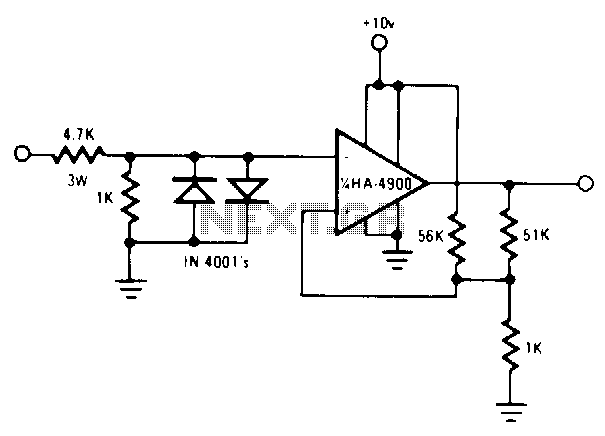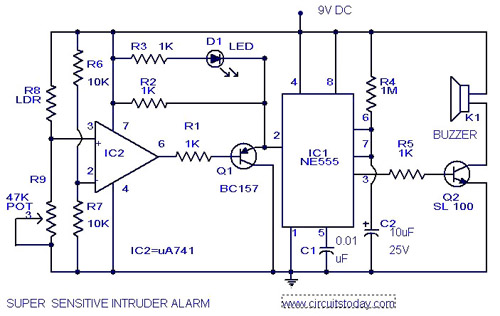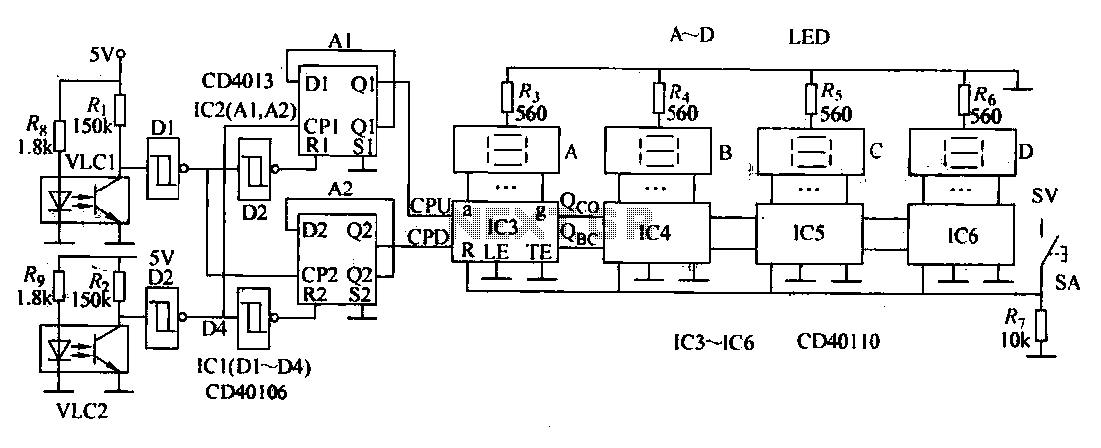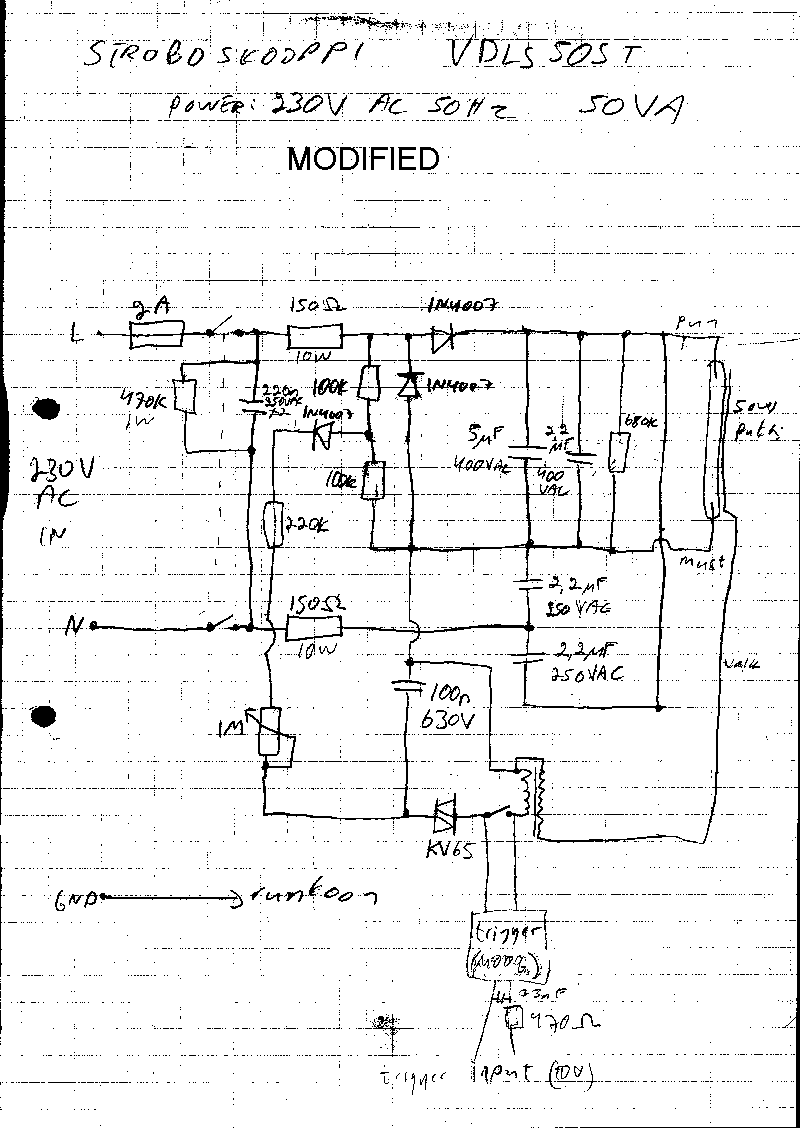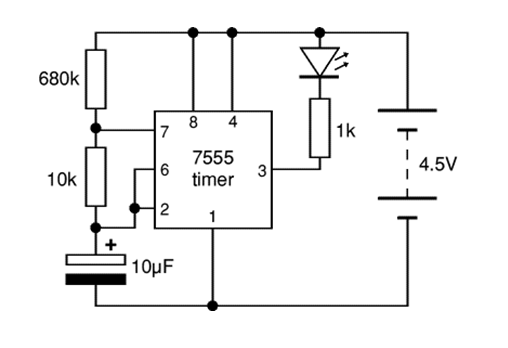
Water Alarm Circuit
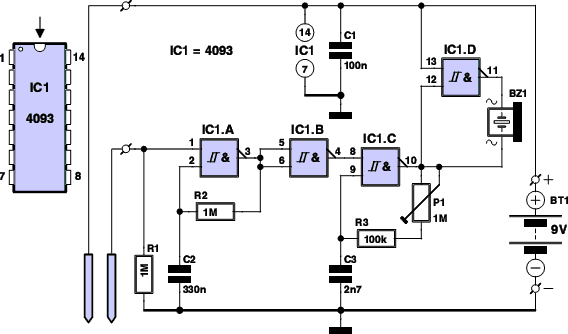
Have you ever witnessed the stairs to an upper story in your home transform into a waterfall? Or perhaps you have returned home to find your aquarium fish attempting to swim across the carpet? For your sake, it is hoped that this has not occurred, as the consequences are typically quite severe. With a selection of electronic components, it is possible to ensure that you receive a warning before having to don waders. Preventing water issues is preferable to addressing them after the fact. However, no matter how many precautions are taken, an occasional leak can still occur.
To create an effective water leak detection and alert system, a schematic can be designed utilizing several electronic components. The system typically includes a water sensor, a microcontroller, a buzzer or alarm, and a power supply.
The water sensor, often a conductive type, is placed in areas prone to leaks, such as near water heaters, under sinks, or around aquariums. This sensor detects the presence of water by measuring conductivity between its probes. When water is detected, the sensor sends a signal to the microcontroller.
The microcontroller, which can be an Arduino or a similar programmable unit, interprets the signal from the water sensor. Upon receiving a signal indicating the presence of water, the microcontroller activates an alarm system. This alarm can be a simple buzzer or a more sophisticated notification system that sends alerts to a smartphone or central home automation system.
The power supply is typically a low-voltage DC source, which can be derived from a wall adapter or batteries, ensuring that the system remains operational even during power outages.
The schematic layout will include the connections between the water sensor, the microcontroller, and the alarm system. The water sensor will be connected to one of the digital input pins on the microcontroller. The buzzer or alarm will be connected to a digital output pin, allowing the microcontroller to trigger it when necessary. Additionally, it may include a reset button to silence the alarm after the water issue has been addressed.
This system provides a proactive approach to water leak management, allowing homeowners to mitigate potential damage by receiving timely alerts before a leak escalates into a more significant problem.Have you ever seen the stairs to one of the upper stories in your house turn into a waterfall? Or maybe you ve come home to find your aquarium fish trying to swim across the carpet? For your sake, we hope not, because the consequences are usually fairly dramatic. With a handful of electronic components, you can at least ensure that you will be warned before you have to put on your waders. It s better to prevent water problems than to have to correct them. But no how many precautions you take, an occasional leak can still happen.. 🔗 External reference
To create an effective water leak detection and alert system, a schematic can be designed utilizing several electronic components. The system typically includes a water sensor, a microcontroller, a buzzer or alarm, and a power supply.
The water sensor, often a conductive type, is placed in areas prone to leaks, such as near water heaters, under sinks, or around aquariums. This sensor detects the presence of water by measuring conductivity between its probes. When water is detected, the sensor sends a signal to the microcontroller.
The microcontroller, which can be an Arduino or a similar programmable unit, interprets the signal from the water sensor. Upon receiving a signal indicating the presence of water, the microcontroller activates an alarm system. This alarm can be a simple buzzer or a more sophisticated notification system that sends alerts to a smartphone or central home automation system.
The power supply is typically a low-voltage DC source, which can be derived from a wall adapter or batteries, ensuring that the system remains operational even during power outages.
The schematic layout will include the connections between the water sensor, the microcontroller, and the alarm system. The water sensor will be connected to one of the digital input pins on the microcontroller. The buzzer or alarm will be connected to a digital output pin, allowing the microcontroller to trigger it when necessary. Additionally, it may include a reset button to silence the alarm after the water issue has been addressed.
This system provides a proactive approach to water leak management, allowing homeowners to mitigate potential damage by receiving timely alerts before a leak escalates into a more significant problem.Have you ever seen the stairs to one of the upper stories in your house turn into a waterfall? Or maybe you ve come home to find your aquarium fish trying to swim across the carpet? For your sake, we hope not, because the consequences are usually fairly dramatic. With a handful of electronic components, you can at least ensure that you will be warned before you have to put on your waders. It s better to prevent water problems than to have to correct them. But no how many precautions you take, an occasional leak can still happen.. 🔗 External reference
Warning: include(partials/cookie-banner.php): Failed to open stream: Permission denied in /var/www/html/nextgr/view-circuit.php on line 713
Warning: include(): Failed opening 'partials/cookie-banner.php' for inclusion (include_path='.:/usr/share/php') in /var/www/html/nextgr/view-circuit.php on line 713
